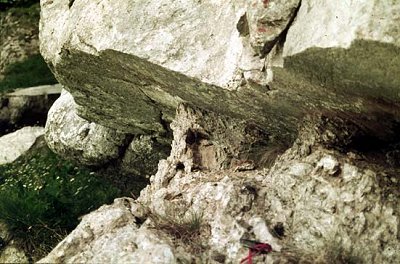The outer part of the Earth is relatively cold. So when it is stressed it tends to break, particularly if pushed quickly! These breaks, across which slip has occurred, are called faults. The most obvious manifestations of active faulting are earthquakes. Because these tend to happen along the boundaries between plates that is where most of the active faulting occurs today. But faulting can occur in the middle of the plates too, particularly in the continents. In general, faulting is restricted to the top 10-15 km of the Earth's crust. Below this other things happen.
There is a wide range of faulting and the faults themselves can form surprisingly complex patterns. Different types of faults tend to form in different settings - the faults at active rifts are different from those along the edges of mountain ranges. So understanding the types and patterns of ancient fault can help geologists to predict and reconstruct the forms of ancient rifts and mountain ranges. The faulting patterns can have enormous economic importance. Faults can control the movement of groundwater, they can exert a strong influence on the distribution of mineralisation and the subsurface accumulations of hydrocarbons. And they can have a major influence on the shaping of the landscape.
Movement on faults, with earthquakes, shatters rocks. In some places these new materials are economically important as ready-made aggregate! In other places they can be a problem for engineers, making hillsides unstable.
Return to the front menu and chose from the topics to find out more about faults!

![]() Thrust
fault surface in limestones from the Alps. Notice the sharp fault plane and
the shattered rocks below.
Thrust
fault surface in limestones from the Alps. Notice the sharp fault plane and
the shattered rocks below.